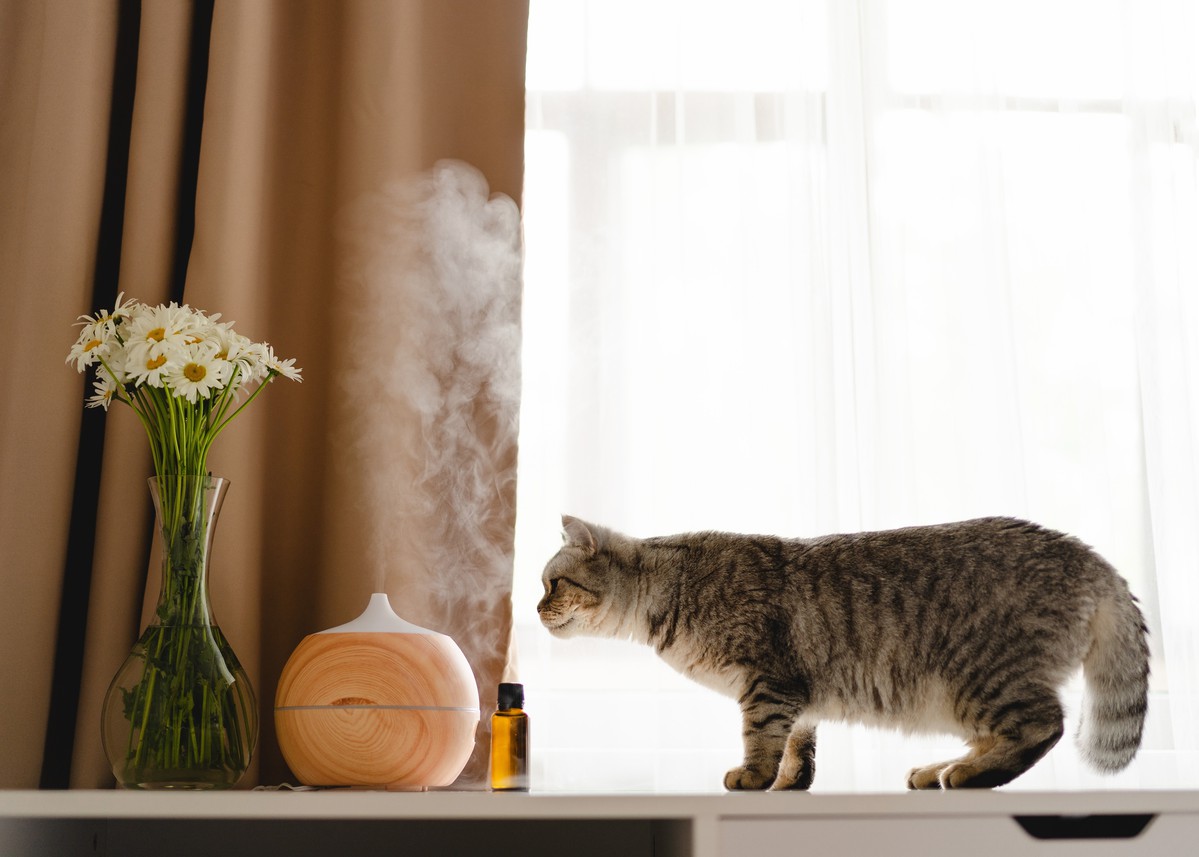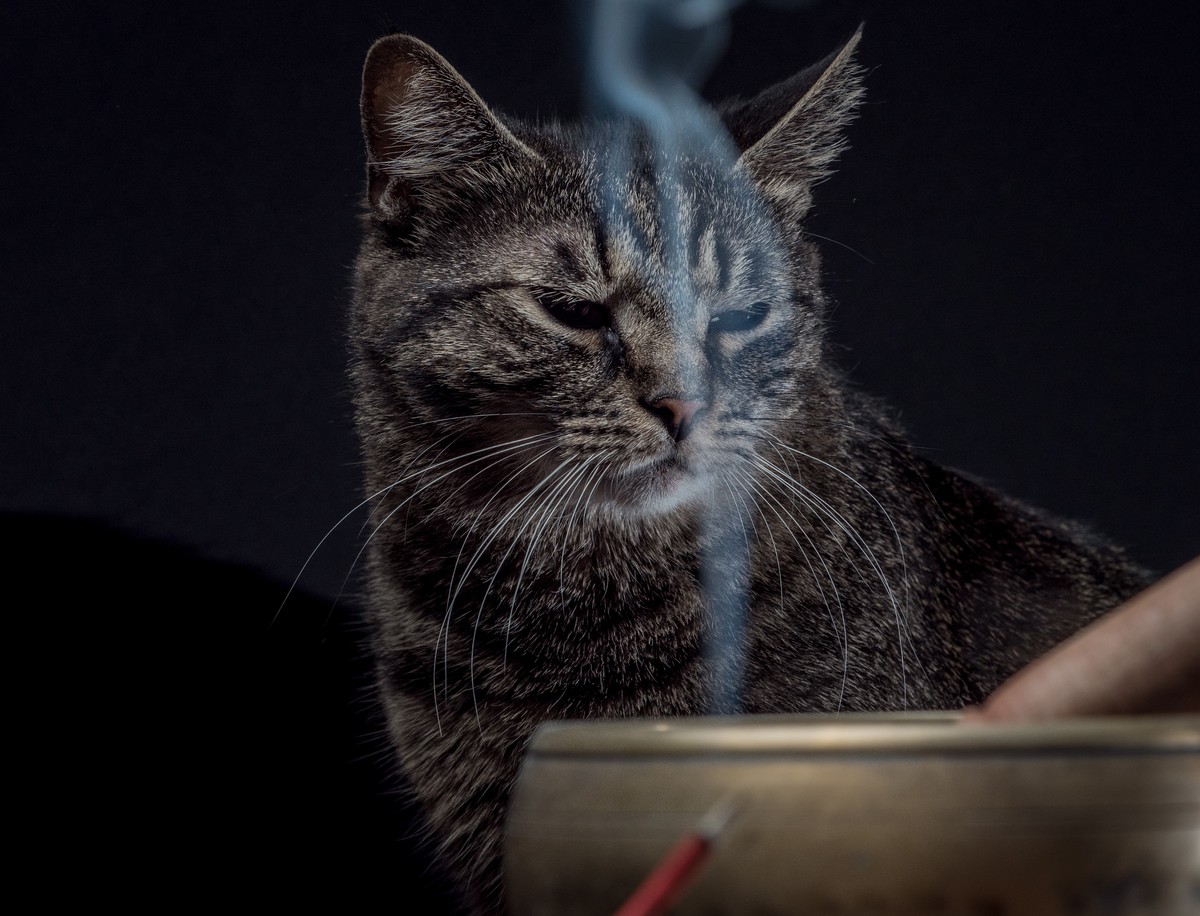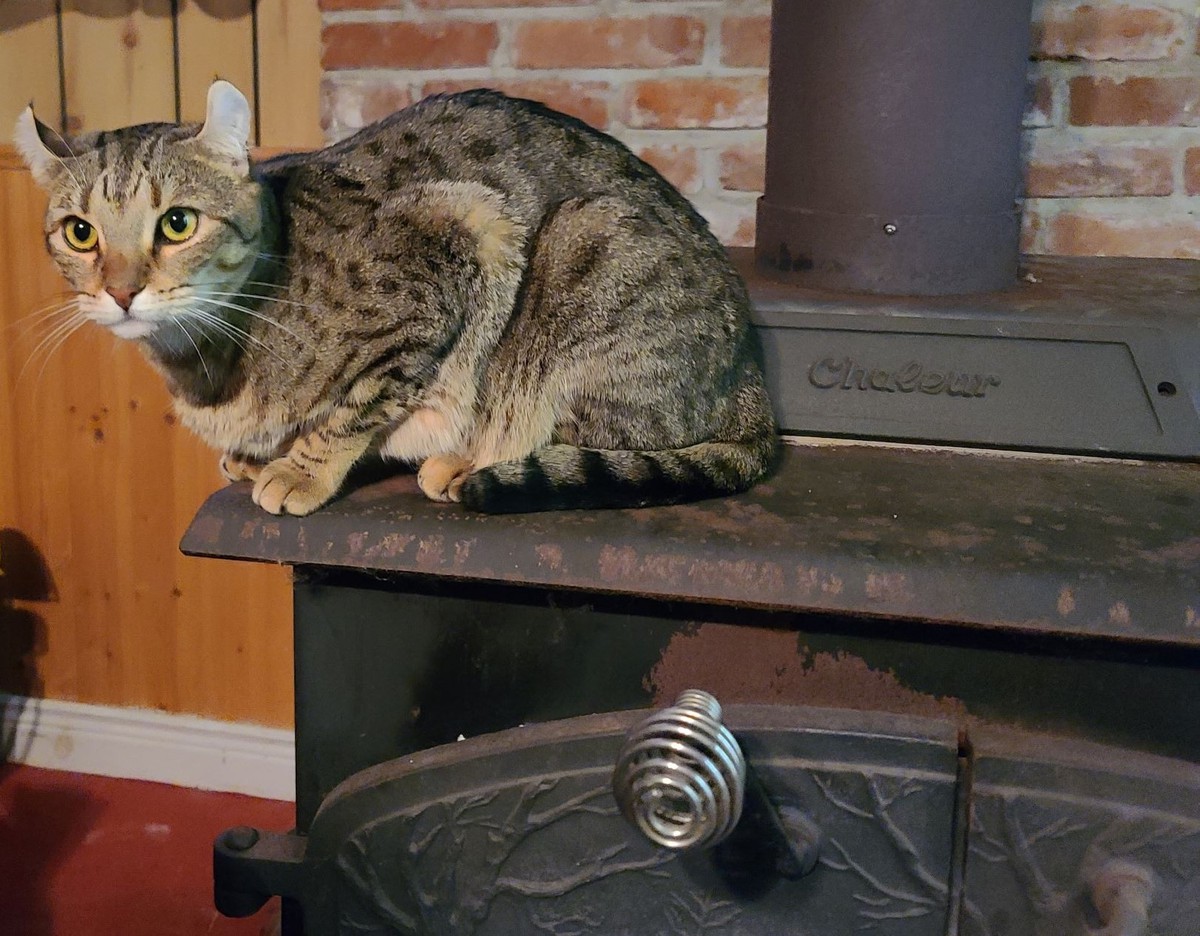Some of the ways we can achieve this are through the use of deliciously-scented candles, the burning of therapeutic essential oils and by relaxing next to an open fire or wood-burning stove. However, what is life-enhancing for us, can be at best unpleasant for our cats, and at worst, life-threatening.
Scented candles
Candles are big business, and scented candles are used in millions of homes to transform the space and replicate delicious smells from nature. Of course, the most obvious risk with candles is from the open flame. Generally, most cats are smart enough not to deliberately make contact with a flame, however, on occasions, they may get too close to lit candles and just brushing past them can lead to singed fur or even burns. Curious cats may also inadvertently knock over a lit candle causing a very serious fire hazard. This is particularly true of kittens and younger cats who love to explore, so even if you think you have chosen a ‘safe’ location for your candle, this may not be the case. As such, lit candles should never be left unattended, and any candles that are used should be sturdy, within a suitable container and be difficult to knock over.
Scented candles present an added problem for cats. What smells lovely to us can be overpowering and deeply unpleasant for our cats. Cats have an incredible sense of smell – a domestic cat’s sense of smell is 9-16 times as strong as humans – and, as such, they are very sensitive to strong scents. Additionally, many candles are made from paraffin wax which releases toxic compounds when burnt, which can harm both us and our cats. Although the risk is low, excessive use of these types of candles is not advised and particular care should be taken if your cat suffers from asthma or other respiratory problems. The risk can be reduced significantly by ensuring that the room where the candles are lit is kept well-ventilated and selecting candles that don’t contain chemicals, such as beeswax and vegetable-based candles.

Essential oils
In addition to scented candles, many of us use essential oils in our homes for their therapeutic properties and pleasant fragrance. However, most essential oils are toxic to cats since they do not possess the required enzymes to break down and metabolise them. Essential oils which are known to be toxic to cats include cinnamon, citrus, clove, eucalyptus, lavender, oregano, pennyroyal, peppermint, pine, sweet birch, tea tree, wintergreen and ylang-ylang. They are particularly dangerous when used undiluted with the general rule being, the higher the concentration of the essential oil, the greater the risk to the cat. Poisoning typically occurs when the oil is ingested, inhaled or absorbed via the skin. Although cats are highly unlikely to deliberately ingest essential oils, they may do so whilst grooming their fur after accidentally coming into contact with the oils through spillages. Cats which come into contact with undiluted essential oils may exhibit alarming effects, including drooling, vomiting, seizures, respiratory distress, liver failure and even death. If you suspect your cat has had contact with essential oils, immediate veterinary attention should be sought.
Essential oils are also often used in a diluted form in passive diffusers where the oils are evaporated. Examples of these are reed diffusers, where the reeds soak up the oil and disperse its fragrance into the air, and plugin or candle burner diffusers that use heat to evaporate the oil. Reed diffusers may present the greatest danger to cats due to the ease with which they can be knocked over, however, the most common hazard to cats from essential oils dispersed through passive diffusers is respiratory irritation. Although this is quite rare, especially with diluted oils, prolonged exposure in an unventilated room can lead to runny eyes, a watery nose, drooling, vomiting and laboured breathing.
Active essential oil diffusers are also becoming increasingly popular, however, these pose a slightly greater risk than passive diffusers as they emit actual microdroplets of oil into the air, which can be absorbed on the skin of a cat or collect on the fur from where it will be ingested via grooming.
As a cat owner, it is important to assess whether the benefits of using essential oils within the home outweigh the risks to a curious cat. In general, the risks are low, however, cat owners should pay particular consideration to the strength of the oils being used, how often they are being used and the route of exposure. If oils are to be used, then good ventilation and fresh air circulation are important ways to minimise the risks. And it goes without saying that essential oils should never be directly applied to a cat’s fur.

Incense
Another popular way of providing pleasing aromas to our homes is through the burning of incense. Incense is made of plant materials and essential oils, which when burned, produce fragrant smoke. However, once again, excessive use of incense can be problematic for cats and other household pets. Not only will cats find the fragrance overpowering but prolonged exposure to the smoke can act as a respiratory irritant for cats and should be avoided altogether if you have a cat with asthma. If you must burn incense, try to restrict the practice to one room in your home, keep your cat out of this room whilst burning the incense and provide good ventilation.
Open fires and wood-burning stoves
Open fires and wood-burning stoves present another potential hazard for cats. With the increase in energy prices, there has been a resurgence in the use of open fires and wood burners as an alternative source of heat. There is no denying the pleasure that can be derived from sitting by a crackling open fire, something which will immediately appeal to our feline friends too, who will soon identify the prime location to gain maximum heat. In most cases, cats have the good sense of not getting too close to the heat source. However, if they have positioned themselves immediately in front of an open fire, they could be accidentally injured or burnt by sparks escaping from the fire. As such, it makes good sense to always use a fireguard, something that is not just good for protecting our pets but is also a sensible fire safety precaution.
Wood-burning stoves may present a greater hazard than open fires, as cats can easily jump onto the stove. Also, the majority of the time they are unlit and not hot, which may lead a cat to believe the surface presents no danger and is simply another useful vantage point within the home. Generally, cats are smart enough to recognise when a wood burner is lit and emitting heat, however, this is not always the case and a startled or adventurous cat could easily leap onto a lit stove causing immediate burns to their paws. Therefore, it is advisable to actively discourage cats from ever exploring the wood-burning stove and supervise curious cats when the wood burner is lit. It may also be wise to avoid using a wood burner with kittens or very young cats. It is worth remembering that many cats respond well to reward-based training, which can be a useful tool if you live in a home that relies on either an open fire or a wood-burning stove.

There are risks all around us and, in many cases, it would defy common sense to stop using candles, essential oils or open fires altogether because of the risk to our cats. However, it is crucial to be aware of the dangers and use that knowledge to inform our decisions. For example, a kitten or very adventurous young cat living in a small flat may be at greater risk from the burning of incense or the use of reed diffusers than a mature cat living in a large drafty house with the choice of a number of rooms to retreat to. Whatever our circumstances, being aware of the dangers and minimising the risks allows us and our cats to enjoy our homes safely.









One Response
Very nice post. I just stumbled upon your weblog and wished to say that I’ve really enjoyed browsing your blog posts. After all I will be subscribing to your feed and I hope you write again soon!